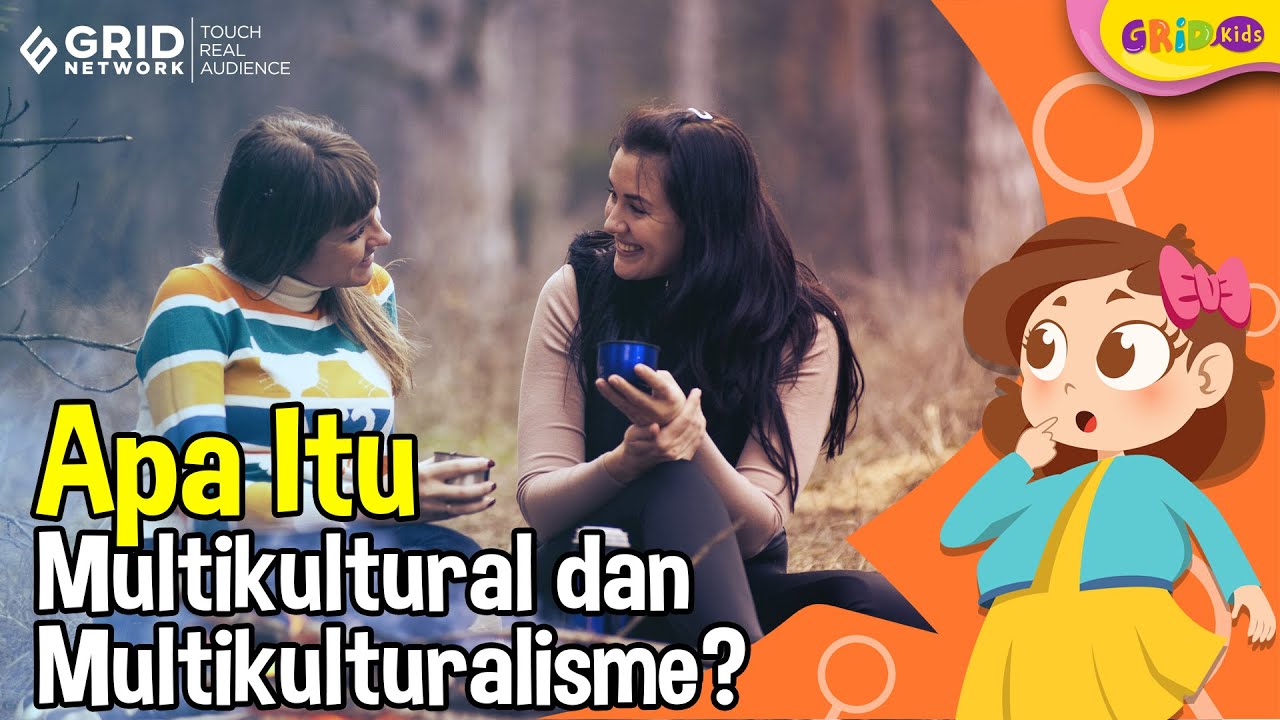ANTROPOLOGI XI BAB 1 PART 1
Summary
TLDRThis educational video focuses on the diverse cultural aspects of Indonesia, particularly examining the relationships between culture, language, traditions, and beliefs in a multicultural society. It introduces key concepts such as local culture, national culture, and foreign cultural influences, while also exploring traditional practices, folklore, and the impact of globalization. Through a discussion of seven cultural elements—language, knowledge systems, religion, technology, social organizations, livelihoods, and arts—viewers are invited to consider how cultural traditions shape identities and how globalization, modernity, and westernization influence local customs.
Takeaways
- 😀 The lesson is focused on cultural diversity and cultural exchange, specifically discussing the relationship between culture, language, dialects, and oral traditions in the Nusantara region.
- 😀 The core learning goal is to analyze how culture, religion, traditions, and language relate to multicultural societies and apply these concepts in daily life.
- 😀 Culture is defined as the collective creation of the human mind (Budi), encompassing creativity, action, and feeling.
- 😀 Culture and civilization differ: 'culture' refers to an individual or collective form, while 'civilization' refers to a more comprehensive system of human thought, action, and creation.
- 😀 There are seven cultural elements: language, knowledge systems, religion, technology, social organization, livelihoods, and the arts, all of which shape cultural identity.
- 😀 Local culture is developed gradually over time and influenced by the environment, including art, traditions, mindset, and customary law.
- 😀 Folklore plays a significant role in local culture and is passed down through oral traditions, actions, and material objects, such as myths, proverbs, traditional games, and rituals.
- 😀 Traditional laws (hukum adat) are specific to each region and can include practices like those in Aceh (whipping law) or in Papua (cutting a finger to honor the deceased).
- 😀 National culture refers to the shared culture supported by the majority of a nation's people, which creates national identity, such as traditional practices like batik or mutual cooperation (gotong royong).
- 😀 Globalization, modernization, and Westernization introduce foreign cultural elements, which are either incorporated into or adapted by local cultures. This leads to phenomena like the popularity of K-pop or fast food chains.
- 😀 Cultural differences can lead to cultural lag (gaps in adaptation between cultures) and cultural shock (a sudden realization of cultural differences), as seen in differences in clothing, food, and social practices between Indonesia and other countries.
Q & A
What is the main topic of the lesson in the script?
-The main topic of the lesson is 'Cultural Diversity and Similarities' (Kebudayaan dan Keragaman Budaya) for class 11 students.
What are the learning objectives of this lesson?
-The learning objectives are: 1) To analyze cultural phenomena, including religion, beliefs, traditions, and language in a multicultural society. 2) To apply the results of the analysis of culture in a multicultural society to daily life.
What does the term 'culture' originate from, according to the script?
-The term 'culture' originates from Sanskrit, specifically the word 'budaya,' which is derived from 'buddhi' meaning intellect or mind.
What is the difference between 'budaya' and 'kebudayaan'?
-'Budaya' refers to the singular form, while 'kebudayaan' refers to the plural form, encompassing the total system of ideas, actions, and works created by humans in society.
What are the seven elements of culture mentioned in the script?
-The seven elements of culture are: 1) Language, 2) Knowledge system, 3) Religious beliefs or systems, 4) Tools and technology, 5) Social organization, 6) Livelihoods, 7) Arts.
What is the definition of 'kebudayaan lokal' (local culture)?
-Local culture refers to the values and practices developed by a community or region over time, which are passed down through generations and include aspects like arts, traditions, and local law.
What is meant by 'folklore' in the context of local culture?
-Folklore refers to cultural traditions that are passed down orally or through actions, including oral stories, proverbs, traditional songs, dances, and rituals.
What is 'kebudayaan nasional' (national culture), and what are its key characteristics?
-National culture is the culture shared by the majority of a nation's population. It is characterized by cultural practices that are widely recognized, pride-worthy, distinctive, and provide a sense of identity for the nation.
How does globalization impact cultural practices according to the script?
-Globalization is the process of adapting to global standards, making it necessary for nations to adopt certain global practices. This results in the blending of local and international cultures, including technology, language, and even values.
What is the difference between 'westernization' and 'modernization' in cultural adaptation?
-Westernization refers to the adoption of Western cultural practices, such as music (e.g., J-pop, K-pop), food chains (e.g., McDonald's), and lifestyles. Modernization, on the other hand, focuses on technological advancement, requiring societies to embrace modern tools and systems for daily activities.
Outlines

此内容仅限付费用户访问。 请升级后访问。
立即升级Mindmap

此内容仅限付费用户访问。 请升级后访问。
立即升级Keywords

此内容仅限付费用户访问。 请升级后访问。
立即升级Highlights

此内容仅限付费用户访问。 请升级后访问。
立即升级Transcripts

此内容仅限付费用户访问。 请升级后访问。
立即升级浏览更多相关视频

Values: Family Culture RethinkEd Video

CROSS CULTURAL UNDERSTANDING, is it important to study?

Pengertian dan Karakteristik Masyarakat Multikultural

Pengaruh Islam dalam Berbagai Aspek Kehidupan Masyarakat Indonesia

Upaya Melestarikan Budaya Indonesia Sebagai Identitas Nasional

Introduction to Culture [AP Human Geography Review Unit 3 Topic 1]
5.0 / 5 (0 votes)
